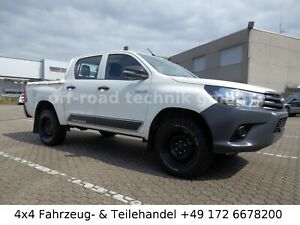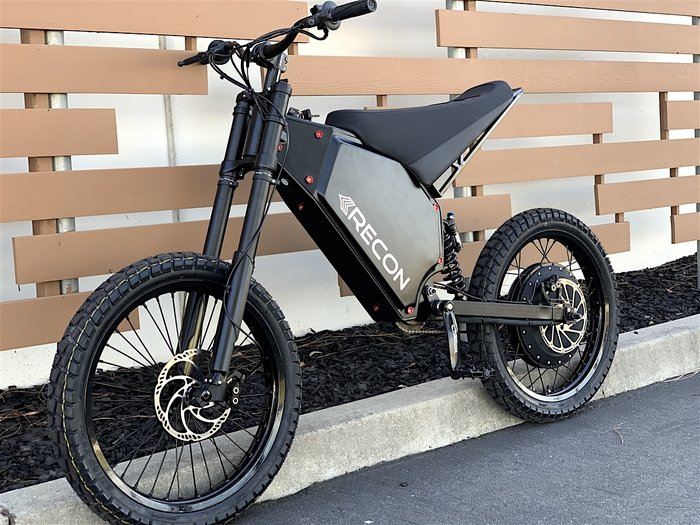
Toyota Hilux 2.5 D-4D Double Cab City (75 kW)
Content
Toyota Hilux is a living legend. It has been around the world for over 40 years and has sold over 12 million copies. In Africa, Asia and the Nordic countries (Canada, Scandinavia), where weather conditions are most severe, reliability is paramount. Trust. And these many people are sitting right in the Hilux.
Thus, Toyota probably has the best image, although Mitsubishi, and in some countries even Mazda breathes with its collar. But there is a feeling that Japan's largest car manufacturer is resting on its laurels. Not that Hilux is ugly, but neither is it slow or unreliable.
It's still relatively good, but what if the competitors have taken a leap forward and they're just a small step forward. Competitors offer powerful engines, Toyota is the weakest among our trucks, competitors already have a six-speed transmission and excellent ride, and Toyota only five gears and the truck feels like driving. In addition, Hilux is not the cheapest!
If we compare the driving position of the Navara and the Hilux, we immediately realize that the Japanese competitor has better seats, more space and better ergonomics (the Hilux only has a height-adjustable steering wheel, not a length). The dashboard is modern, perhaps with fewer drawers for small items, and with the Double Cab version you can fold down the rear seats and get plenty of luggage space in the cabin. The turning circle is like a truck, but thanks to the power steering, the driver's job is not so difficult.
The gearbox is good: reliable, otherwise slow, but the only major complaint is the number of gears. Perhaps the transmission will make it easier to master technically advanced engine technologies (Common Rail, turbocharger), but with less power and more modest torque. On the other hand, we must note that in the comparative test (when we drove the same route with all cars in the same conditions!) the smallest amount of gas oil was used.
Activation of all-wheel drive and gearbox is classic. When switching, you do not need to think about whether the electronics have failed or whether the signal lamp on the instrument panel has burned out. Only the right hand will find the smaller lever and you will immediately know what type of drive you are driving. When riding off-road, the Hilux, which otherwise allows 30 degrees of entry, 26 degrees of exit, and a 25-degree transition angle, which can climb a hill at 45 degrees and allows a maximum draft depth of 700 millimeters, only balked. sensitivity of plastic bumpers when driving through puddles. The only one in the party almost lost his license plate (installation location!) And the only ones with front bumper brackets did not cope with their task. For working animals, this sensitivity is a nuisance.
However, in the comparative test, it received the most disadvantages among drivers due to the less comfortable chassis, mainly due to the rear springs. The butt was restless, especially on short bumps, but on the other hand, we believe that the feel (and therefore the results) under full load are more likely to be different.
Toyota has a great image, it knows how to make good (even more powerful) engines, makes quality cars that become more beautiful over time. Only all this should come together in the next Hilux, and again there will be fear and awe of all competitors.
Peter Kavcic, Vinko Kernc, Dusan Lukic, Alyosha Mrak
Photo: Aleš Pavletič.
Toyota Hilux 2.5 D-4D Double Cab City (75 kW)
Basic data
| Sales: | Toyota Adria Ltd. |
|---|---|
| Base model price: | 27.875,15 € |
| Test model cost: | 29.181,27 € |
| Calculate the cost of auto insurance | |
| Power: | 75kW (102 KM) |
| Acceleration (0-100 km / h): | 18,2 with |
| Maximum speed: | 150 km / h |
Technical information
| engine: | 4-cylinder - in-line - displacement 2494 cm3 - maximum power 75 kW (102 hp) at 3600 rpm - maximum torque 260 Nm at 1600-2400 rpm. |
|---|---|
| Energy transfer: | rubber 225/70 R 15 C (Goodyear Wrangler M + S). |
| Capacity: | top speed 150 km / h - acceleration 0-100 km / h in 18,2 s. |
| Transportation and suspension: | front axle - individual suspensions, spring struts, two transverse triangular guides, stabilizer - rear axle - rigid axle, leaf springs, telescopic shock absorbers. |
| Mass: | empty vehicle 1770 kg - permissible gross weight 2760 kg. |
| External dimensions: | length 5255 mm - width 1835 mm - height 1810 mm - trunk 1530 × 1100 mm - fuel tank 80 l. |
| Inner dimensions: | total internal length 1680 mm - width front / rear 1470/1460 mm - height front / rear 980/930 mm - longitudinal front / rear 850-1070 / 880-640 mm. |
| Box: | distance x width (total width) 1530 × 1100 (1500 mm) mm |
Overall rating (261/420)
Relatively good-looking, durable, with very good images, modest fuel consumption, and convincing enough off-road to provide its share of the sales pie. It's not the best SUV in the competition, but the driving feel is most like a truck.
Exterior (10/15)
all
Interior (92/140)
all
Engine, transmission (28
/ 40)all
Driving performance (60
/ 95)all
Performance (9/35)
all
Security (37/45)
all
We praise and reproach
image
(minimum) fuel consumption
appearance
flawless transition to four-wheel drive and gearbox
he has the weakest engine
uncomfortable chassis on short bumps
little room behind the wheel
sensitive front bumper (driving through puddles)
